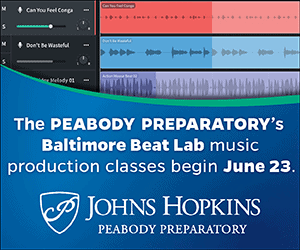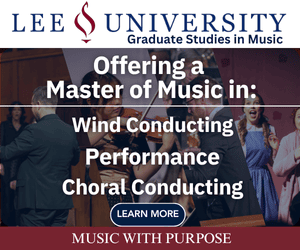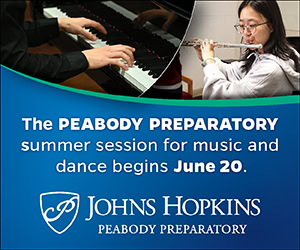/ News Posts / Lessons from the Pandemic
Lessons from the Pandemic
High School Teaching
By NAfME Member Brendan Finucane
This article was first published on the Chromawheel blog.
The transition to distance learning necessitated by the COVID-19 pandemic has up-ended music education. There is a widespread feeling that “all bets are off.” Curricula are in flux; there are both frustrating impossibilities, and new possibilities. Adaptive experimentation by teachers has led to a profusion of recommended new approaches and tools. Much is exciting and new, but much is unclear. What should guide our approach to September?
For me, a silver lining of confusion in one domain has been clarity in another. In this post, I will not attempt to sort through and evaluate the wide range of new tools, new resources, and new curricular ideas now available. Instead, I will take a step back and share four key concepts that I’ve learned to focus on over the last decade of high school teaching. Through the abrupt transition to distance learning and the emotional ups and downs of the past two months, focusing on these four “lessons learned” has kept me grounded, and allowed me to feel that my work with students continued effectively through the end of the spring semester.
These four “lessons” will be my guiding principles as I plan for September. They will allow me to make meaningful selections from a dizzying array of new possibilities—choices that I am confident will serve my students well. Ideas for specific, practical implementation of these principles will be the subject of future posts. Fellow teachers: I hope you find these four “lessons” useful too, and that they help orient you as you plan for the fall.
Lesson #1: Don’t Lead, Cheerlead
At a time when many high school students are AWOL, it is especially important that you cheerlead for the students who are showing up. You must allow yourself to be tasked by these students. Work to make sure that the students who are showing up have a good experience.
Cheerleading means encouraging and supporting the ideas and interests of your students. It means sharing your perspective and experience, to give your students insight into their experiences—being a resource. It means helping your students open their doors. The best teachers I know do this.
To be sure, cheerleading is actually a form of leading. In fact, it is an integral part of good leadership.
When discouragement and pessimism are commonplace, it is especially important to be open to the perspectives of your younger students. You may be inspired by their optimism. Create a space in your meetings for sharing. When your students take initiative and responsibility for the direction of the class, and of their learning, they will be much more invested, and much more motivated.
Make sure to regularly ask the following of your students:
- How are they feeling?
- What inspires them? Where would they like to go?
- What are their frustrations? What are their blockers?
Lesson #2: Build a Machine
Our world demands that we work ever more efficiently and productively. Do more, with less! The constant evolution of machines is tangible proof of this, and it is important to build one with your students—in the classroom or remotely.
Your machine will not be physical, though. It will be an organizational structure that helps you and your students accomplish what you agree you want to accomplish. It will serve the curriculum, and the learning goals.
Especially now, when teachers are working tremendous hours adapting curricula to distance learning, it is important to focus on organizational structure. This will reduce the burden on you, the teacher. Offloading some labor is very important! Beyond reducing your own work, allowing your students to take initiative, and giving them the responsibility for playing a part in a functioning organization will provide them much needed investment, and motivation.
In building your machine, make sure to ask your students the following:
- What is the overall goal that the machine should serve?
- What are the parts, the roles, that must be filled?
- Who should play what role?
- What role do the students need you, the teacher, to play?
Lesson #3: Share Your Problems
If your car breaks down, take your foot off the gas immediately, pull over, and stop driving. Then take your car to a mechanic (or call a tow truck!).
Bottom line: Stop, and share your problem. Don’t keep driving, and don’t try to fix it alone!
Similarly, if you sense your class machine (Lesson #2) is broken, then stop. Don’t be afraid to let it grind to a halt. And then bring the problem to your students. Don’t be afraid to sound a little dire. The best teachers I know do this.
For years of classroom teaching, I used to find myself ignoring the problems, and getting frustrated. I’d push forward with blinders on, trying to force things to work. Then a few years ago I learned: Better to turn off the ignition, inform the students the machine is broken, and go back to basics. Scary the first time, but the results are far better in the long run.
A silver lining of the transition to distance education is that we teachers are all forced by circumstance to acknowledge that the normal classroom machine is broken. Necessity dictates that we raise to consciousness something that we should all raise more regularly: the goals, and functioning of the class machine.
Just as you should ask your students to share their interests, goals, frustrations, and blockers with you (Lesson #1), you must share your own interests, goals, frustrations, and blockers with them. Be open and honest. You have taken their input, and offered your ideas and experience in building a class organization that serves the shared learning goals. If you then at some point start to feel a bolt is loose, or a belt is broken, trust your gut. Stop, and share your feelings with your students.
Ask these basic questions of your students:
- What are the learning goals?
- How does the student organization serve these goals?
- Is there a problem with the organization? Is it in fact broken?
- How can the organization be transformed to better serve the goals?
- Does the organization need different roles, or different students in the roles?
Lesson #4: Sustain Surprise
Immediately following the closure of schools and the impromptu transition to remote learning, I found myself dealing with strong feelings of loss. Yes, I missed seeing my students, and working with them in the classroom. But what was it specifically about making music in a room together that felt so irreplaceable?
After thinking carefully about it, and talking through the question with my high school students, my tentative answer is: the element of surprise.
Surprise plays a huge role in successful teaching and learning. Surprise is there in any good story, and any good joke. It is there when a student or a group of students play a piece of music, lending their own unique interpretation to a composer’s ideas. It is there in a good jazz solo. Surprise is there when a student realizes they are interested in something that they thought to be totally boring—or finds something fun they thought for sure would be totally lame. Finally, surprise is there for us teachers when we try something new and it works—when we reach a student in a way we weren’t expecting to be possible.
Is it possible to sustain surprise beyond the classroom?
Of course it is!
In preparation for the uncertainty of the coming fall semester, I encourage high school teachers to stay open to new ideas. Listen to your students, and be open to all sorts of new approaches. Make sure to build possibilities for surprise into your teaching model. The more student input you make room for, the more the students will surprise you.
Let surprise sustain you in your endeavors. Good luck!
About the author:
 NAfME member Brendan Finucane has teaching experience in both public and private schools in Illinois. For the past ten years he has taught general music, string orchestras and digital music production at the grade school and high school level at the Chicago Waldorf School. He is a co-owner at Chromawheel Music and leads the Knights of Jazz String Band, an extracurricular string ensemble devoted to early jazz.
NAfME member Brendan Finucane has teaching experience in both public and private schools in Illinois. For the past ten years he has taught general music, string orchestras and digital music production at the grade school and high school level at the Chicago Waldorf School. He is a co-owner at Chromawheel Music and leads the Knights of Jazz String Band, an extracurricular string ensemble devoted to early jazz.
Did this blog spur new ideas for your music program? Share them on Amplify! Interested in reprinting this article? Please review the reprint guidelines.
The National Association for Music Education (NAfME) provides a number of forums for the sharing of information and opinion, including blogs and postings on our website, articles and columns in our magazines and journals, and postings to our Amplify member portal. Unless specifically noted, the views expressed in these media do not necessarily represent the policy or views of the Association, its officers, or its employees.
August 11, 2020. © National Association for Music Education (NAfME.org)
Published Date
August 11, 2020
Category
- Uncategorized
Copyright
August 11, 2020. © National Association for Music Education (NAfME.org)







